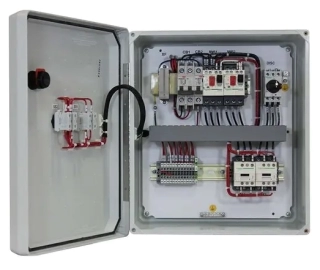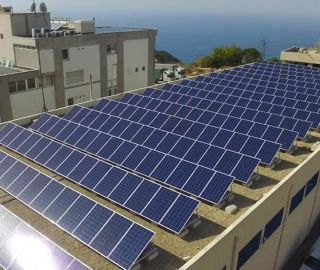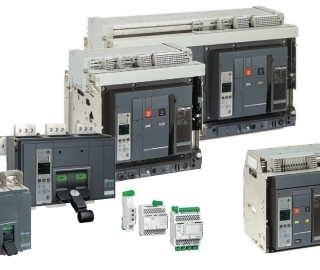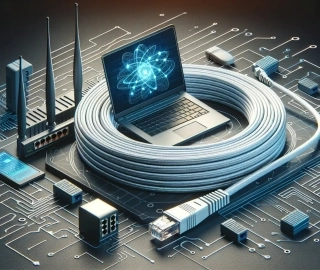
When considering an upgrade for a network setup, why choose Cable Cat6 over its predecessors? With its capability to support data transfer speeds of up to 1,000 Mbps over distances up to 180 feet and a bandwidth of 250 MHz, Cable Cat6 ensures faster data transmission and less interference, making it suitable for data centers and applications with substantial data transfer needs like structured cabling and IoT setups. This advanced cable standard not only meets today’s high-bandwidth requirements but is also equipped for future upgrades, maintaining compatibility with RJ45 color standards and backward compatibility with Cat5/5e and Cat3 cables.
Factoring quality, price, and the convenience of immediate delivery from the Dubai store into the decision-making process further underscores the value of choosing Cable Cat6 for structured cabling solutions. With designs that comply with ANSI/TIA-568 standards, these cables promise a high level of performance and reliability. Whether it’s for a data center, smart home setup, or an enterprise networking system, Cable Cat6 caters to a broad range of needs with its versatility, ensuring a smooth transition and integration into existing infrastructure.
Performance and Speed
Cable Cat6’s performance is distinguished by its impressive data transfer speeds and reduced crosstalk, which enhances network reliability. Here’s a detailed look at its capabilities:
- High-Speed Data Transfer: Cat6 cables are capable of supporting data transfer rates of up to 10 Gbps at 250 MHz for lengths up to 55 meters. For shorter distances, specifically up to about 180 feet, they can maintain a speed of 1,000 Mbps or one gigabit per second. This makes them highly effective for high-speed network environments.
- Reduced Crosstalk and Interference: The advanced design of Cat6 cables includes tighter twisted pairs and better insulation, which significantly reduce crosstalk and electromagnetic interference. This results in clearer signal transmission and less chance of data corruption. Both individual pairs and the entire cable are shielded, providing additional protection against external interferences like electromagnetic interference (EMI) and radio frequency interference (RFI).
- Long-Term Network Efficiency: Cat6 cables are recommended for long-term Gigabit Ethernet network setups due to their ability to handle higher bandwidths and faster speeds. They are more qualified to manage Gigabit Ethernet networks, making them a preferable choice for future-proofing network installations.
By supporting higher data transfer speeds and enhanced signal integrity, Cat6 cables ensure a robust and efficient network setup, suitable for both current needs and future expansions.
Durability and Construction
Cable Cat6 is renowned for its robust construction and durability, which significantly enhances its lifespan and reliability in various environments. Here’s a detailed exploration of its design and construction features:
Design Variations and Material Quality
- Conductor Material: Cat6 cables utilize a twisted pair of 24 AWG copper wires, ensuring excellent electrical conductivity and durability.
- Insulation Options: Depending on the installation environment, Cat6 cables offer unshielded versions for flat cables, while round cables incorporate filler substances that enhance insulation and structural integrity.
Flat vs. Round Cable Construction
- Flat Cat6 Cables:
-
- More flexible, making them easier to install in compact spaces.
- They require more maintenance and are less durable, which might limit their use to less demanding environments such as residential and office settings.
- Ideal for installations under carpets or around door frames due to their slim profile.
- Round Cat6 Cables:
-
- Feature protective insulation, fillers, and sometimes additional shielding, making them more durable and suited for harsher conditions.
- They require less maintenance and are capable of providing higher uptime, crucial for critical applications like data centers and industrial settings.
- Typically used in walls, ceilings, and outdoor installations where additional protection against physical and environmental stress is necessary.
Enhanced Performance Through Advanced Construction
- Crosstalk Reduction: The tighter twists and increased insulation in Cat6 cables significantly reduce crosstalk, ensuring stable and clear connections essential for high-speed data transmission.
- Signal Integrity: Thicker wire coiling in Cat6 reduces signal interference, which is particularly important in environments with high electromagnetic interference.
These construction features not only contribute to the physical durability of Cat6 cables but also ensure consistent performance over their lifespan, making them a reliable choice for both current and future networking needs.
Compatibility and Versatility
Broad Compatibility Across Devices and Systems
Cable Cat6 is highly versatile, supporting a wide range of devices and network configurations. This compatibility extends to network adapters, web cameras, gaming consoles, and computers, ensuring that users can integrate these cables into virtually any setup [Webpage 28]. Particularly, their backward compatibility with older Ethernet standards like Cat5 and Cat5e allows for seamless upgrades without the need for complete infrastructure overhauls [Webpage 25] [Webpage 26].
Enhanced Versatility for Different Environments
The availability of different shielding options such as F/FTP, F/UTP, and U/UTP makes Cat6 cables adaptable for various applications, ranging from residential to more demanding industrial environments [Webpage 29]. This adaptability is crucial in environments where both electromagnetic interference and physical durability are considerations.
Support for Extended Network Setups
Cat6 cables excel in maintaining signal quality over longer distances compared to their predecessors, Cat5 and Cat5e. This makes them an ideal choice for larger settings such as office buildings and expansive homes, where long cable runs are necessary. The support extends to various network devices, enhancing the connectivity of routers, gaming consoles, and more, across extensive network layouts [Webpage 31].
Price Comparison
Price Comparison
When evaluating the cost-effectiveness of Cable Cat6, a variety of options are available in the market. Here’s a detailed price breakdown of some relevant products:
- Cable Cat6 Options
-
- Belden Cat6 Cable: Priced at SAR 450, this cable is known for its high quality and reliability, making it ideal for structured cabling in demanding environments like data centers [Webpage 33].
- D-Link CAT6 UTP Cable: At SAR 458.49, this cable offers similar benefits, ensuring robust performance and durability for extensive network setups [Webpage 38].
- Ethernet Cable 100M CAT6: More economically priced at SAR 46.00, this option provides a cost-effective solution for users needing longer cable runs without compromising on quality [Webpage 36].
- Comparative Analysis with Other Tech Products
-
- Hama DisplayPort to HDMI AV Cable: At SAR 99, this cable serves a different function but highlights the varied pricing in cabling solutions [Webpage 33].
- JBL QUANTUM300BLK Wired Over Ear Headphones: With a price of SAR 325, it shows the investment in peripheral devices compared to essential networking cables [Webpage 33].
- Advantages of Slim Cat6 Cables
-
- Slim Cat6 cables: These are 36% thinner than regular Cat6 cables, priced similarly but offer better airflow and equipment cooling, crucial for maintaining system efficiency in compact spaces.
This price analysis not only helps in understanding the cost range of Cable Cat6 but also underscores its value proposition, especially when considering the quality and immediate delivery options available from stores in Dubai.
Conclusion
Throughout this guide, we have meticulously navigated the exceptional benefits and crucial aspects that Cable Cat6 brings to network infrastructures, emphasizing its superior data transfer speeds, reduced crosstalk, and enhanced longevity. The culmination of these features positions Cable Cat6 as a pivotal choice for those seeking to optimize their network setups, from data centers to smart home configurations. Furthermore, the significance of quality, competitive pricing, and the convenience of prompt delivery from Dubai stores have been outlined as vital considerations, magnifying the appeal of Cable Cat6 for both immediate needs and future expansions.
Drawing upon the comprehensive analysis presented, it’s evident that Cable Cat6 stands as an integral solution for modern networking demands. Its adaptability across various environments, coupled with backward compatibility and the prospect of upgrading network infrastructures without extensive overhauls, underscores its unparalleled value. Bearing in mind these considerations, including the advantageous access to quality cables with immediate delivery options from stores in Dubai, encourages a well-informed decision when planning network upgrades or installations. As we navigate towards increasingly data-driven environments, the choice of Cable Cat6 emerges not just as a recommendation, but a foundational element for building robust and efficient network architectures.
FAQs
1. Why is Cat6 cable considered important?
Cat6 Ethernet cables are highly valued for their ability to support high-speed networks requiring dependable connectivity across extended distances. They are designed to handle higher bandwidth capacity and longer cable runs, offering future-proofing capabilities that are beneficial for both businesses and individual users.
2. What should you consider when selecting a Cat6 Ethernet cable?
When choosing a Cat6 Ethernet cable, consider the following six aspects:
- Bandwidth: Cat6 cables support higher data transfer rates compared to CAT5e cables.
- Speed: Evaluate the speed requirements of your network.
- Crosstalk: Look for cables that minimize interference between the wires within the cable.
- Maximum Length: Determine the required length while maintaining effective signal integrity.
- Visual Differences: Be aware of any physical differences that might affect compatibility or installation.
- Cost: Consider your budget and the cost-effectiveness of the cable.
3. What are the characteristics of a high-quality Cat6 cable?
A good Cat6 cable supports higher bandwidths than its predecessors, Cat5 and Cat5e. These cables are tightly wound and often come with foil or braided shielding, which protects the internal twisted wire pairs from crosstalk and noise interference, enhancing overall network reliability.
4. What are key factors to keep in mind when choosing any Ethernet cord?
When purchasing Ethernet cables, it is essential to consider these eight factors:
- Performance: Assess the performance specifications relative to your network needs.
- Compatibility: Ensure the cable is compatible with your existing network equipment.
- Shielded or Non-Shielded: Choose based on the level of interference in your environment.
- Stranded or Solid: Decide based on the required flexibility and installation conditions.
- Cable Length: Select the appropriate length for your setup without compromising signal quality.
- Cable Color: Opt for a color that helps in managing or identifying cables within your network.
- Suppliers: Choose reliable suppliers for quality assurance.
- Budget: Factor in how much you are willing to spend on your Ethernet cables.
References
[1] – https://www.gearit.com/blogs/news/the-benefits-of-a-cat6-ethernet-cable
[2] – https://www.cdw.com/content/cdw/en/articles/hardware/cat5-vs-cat6-ethernet-cables.html
[3] – https://www.doityourself.com/stry/the-advantages-and-disadvantages-of-using-a-category-6-cable
[4] – https://www.comms-express.com/blog/what-is-cat-6-ethernet-cable/
[5] – https://www.gearit.com/blogs/news/the-benefits-of-cat6-ethernet-cables-over-other-types-of-ethernet-cables
[6] – https://www.cablify.ca/speeds-of-cat5e-cat6-cat6a-cat7-and-cat8-cables-compared/
[7] – https://community.fs.com/article/quick-view-ethernet-cables-cat5-cat5e-and-cat6.html
[8] – https://www.blackbox.co.uk/gb-gb/page/43869/Resources/Technical-Resources/Black-Box-Explains/Copper-Cable/Category-5e-And-6
[9] – https://cableenterprise.com/blogs/news/the-benefits-of-using-cat6-patch-cords-for-your-ethernet-network
[10] – https://www.monkcables.com/blog/pros-and-cons-of-choosing-cat6-cables/
[11] – https://blog.tripplite.com/which-ethernet-cable-should-you-use-cat5e-cat6-or-cat6a
[12] – https://community.fs.com/article/slim-vs-regular-cat6-cable-which-to-choose.html
reliability, making it





